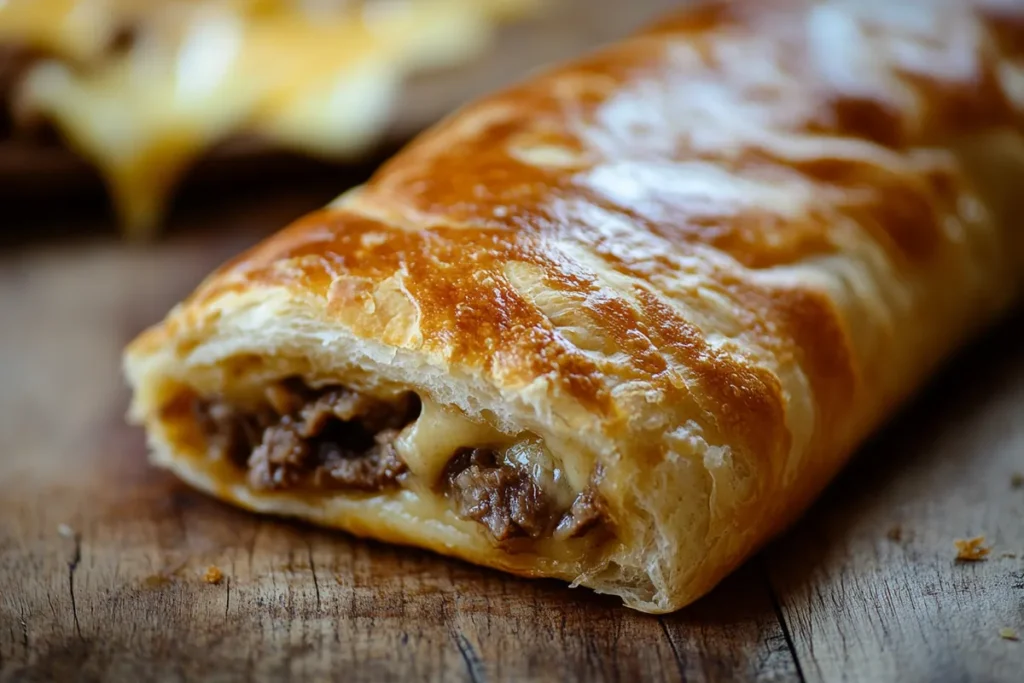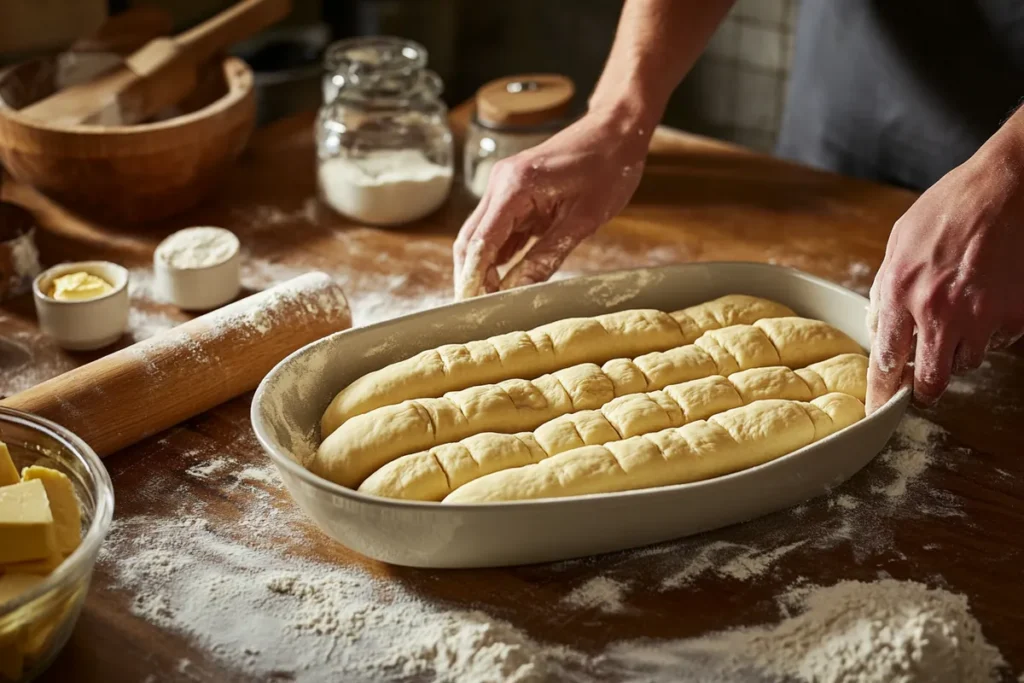The Philly cheesesteak is more than just a sandwich it’s a legendary dish that has secured its place in culinary history. Featuring thinly sliced beef, melted cheese, and a perfectly selected roll, this classic delivers an ideal balance of flavors and textures. While fillings get much attention, the roll is just as vital, serving as the backbone of the sandwich.
A poorly chosen roll can diminish the experience, making bread selection essential for crafting the perfect cheesesteak. In this article, we’ll explore the characteristics of the best rolls, traditional choices, tasty alternatives, and even how to bake your own. By the end, you’ll see why the right roll is the foundation of this beloved dish.
The Unsung Hero: Why the Roll Matters
Although the steak and cheese are the stars of the show, the roll plays a vital supporting role. A poorly chosen roll can overpower the flavors or fail to hold up under the sandwich’s weight, leading to a disappointing experience. Conversely, the right roll enhances the flavors and keeps everything intact.
How the Roll Contributes to a Great Cheesesteak
- Absorbs Juices: A good roll soaks up the steak’s juices without becoming soggy.
- Provides Balance: The contrast between the roll’s texture and the soft fillings creates a satisfying bite.
- Offers Support: The roll acts as a sturdy foundation, ensuring the sandwich holds together from start to finish.
Because of its critical role, many cheesesteak shops rely on the iconic Amoroso roll. Known for their exceptional quality, these rolls offer the perfect balance of softness and durability. Their ability to absorb flavors while maintaining structure has made them the preferred choice for creating authentic Philly cheesesteaks.
Key Characteristics of the Perfect Cheesesteak Roll

Not every roll can rise to the challenge of holding a cheesesteak. A great roll needs to meet several specific criteria to provide the ideal balance of texture, size, and flavor. Without these qualities, even the best filling can result in a subpar sandwich experience. Let’s explore these characteristics in detail:
1. Texture
First and foremost, a cheesesteak roll must have a soft and chewy interior. This softness allows the bread to absorb the juices from the steak and melted cheese, enhancing the sandwich’s overall flavor. However, the bread must not become soggy or disintegrate under the filling’s weight.
At the same time, its crust should provide just enough crispness to add an appealing bite. The crust shouldn’t be too hard or overly crusty, as it might overpower the tender filling or make the sandwich difficult to eat. This delicate balance ensures the roll is both functional and enjoyable.
2. Size and Shape
Size also plays a significant role in making the perfect cheesesteak roll. Rolls typically range from 6 to 12 inches, which allows them to hold generous portions of meat and cheese. Anything smaller might not accommodate the filling adequately, while excessively large rolls can overwhelm the flavors.
Additionally, the elongated shape of the roll is crucial. This shape helps evenly distribute the filling, ensuring that each bite delivers a consistent taste of steak, cheese, and bread. Moreover, the shape reduces the risk of the filling spilling out, making it easier to enjoy the sandwich without a mess.
3. Flavor
Lastly, the flavor of the roll should be subtle yet complementary. Its primary purpose is to serve as a canvas for the sandwich’s rich and savory ingredients. Rolls with overly strong or sweet flavors can clash with the beefy, cheesy goodness of the filling, detracting from the overall experience.
Instead, a mild, neutral-flavored roll works best. This ensures the flavors of the steak, cheese, and any additional toppings are allowed to shine without interference from the bread.
When these three characteristics texture, size, and flavor are perfectly balanced, the roll transforms from a mere supporting actor to a key player in the cheesesteak experience. For more insights on how bread enhances sandwiches, explore this guide to the best bread for roast beef sandwiches, which highlights principles that are equally relevant to crafting the perfect cheesesteak.
Traditional Rolls: The Heart of Philadelphia
In Philadelphia, where the cheesesteak was born, the roll is a true source of pride. Local bakeries have perfected the art of crafting bread that pairs perfectly with this iconic sandwich, ensuring it delivers on taste and tradition.
The Amoroso Roll
Above all, the Amoroso roll stands out as the definitive choice for Philly cheesesteaks. Since its introduction decades ago, it has become a cornerstone of Philadelphia’s cheesesteak culture. Here’s why:
- Soft Yet Sturdy: Amoroso rolls are crafted with just the right balance of softness and durability. Their interior is light and airy, making it perfect for absorbing the juices from the steak and melted cheese, while the slightly firm crust holds everything together. This combination ensures the sandwich remains intact from the first bite to the last, delivering a clean and satisfying eating experience even with generous portions of filling.
- Neutral Flavor: The subtle, mild flavor of Amoroso rolls is what makes them the ideal partner for a cheesesteak. It complements the savory, rich taste of the beef and cheese without overshadowing them. Instead, the roll enhances the overall flavor profile, allowing the juicy steak, melted cheese, and any additional toppings to take center stage.
- Authenticity: Choosing an Amoroso roll is more than just a practical decision, it’s a tribute to Philadelphia’s culinary heritage. These rolls have become synonymous with the city’s cheesesteak culture, representing the essence of a truly authentic experience. By using an Amoroso roll, you’re not just making a sandwich you’re honoring a tradition that has stood the test of time.
Other Traditional Options
In addition to Amoroso rolls, other hoagie-style rolls are also used, especially from local bakeries. While these alternatives share qualities like durability and a soft interior, they might offer subtle differences in flavor or crust texture, allowing for a bit of variety while staying true to tradition.
For a creative twist on the cheesesteak, try this Philly Cheesesteak Egg Rolls Recipe. It’s a fun way to reinvent this classic sandwich while still celebrating its iconic flavors.
Alternative Rolls for Modern Cheesesteak Lovers

While traditional rolls remain popular, many people are experimenting with alternatives. Whether due to dietary preferences or a desire to try something new, these options provide exciting variations on the classic cheesesteak.
1. Hoagie Rolls
- Similar to Amoroso rolls in texture and structure.
- Widely available, making them a convenient option for home cooks.
2. French Bread
- Offers a crispier crust for those who prefer added crunch.
- Its durability makes it a practical choice for larger sandwiches.
3. Whole Wheat Rolls
- A healthier alternative with added fiber.
- Maintains the necessary strength while introducing a subtle nuttiness.
4. Gluten-Free Rolls
- Perfect for individuals with gluten sensitivities.
- Many gluten-free options replicate the softness of traditional rolls.
5. Ciabatta
- Known for its airy interior and robust crust.
- Adds an artisanal touch to the cheesesteak experience.
By experimenting with these alternatives, you can customize your sandwich to suit your preferences. For another modern twist, explore this Philly Cheesesteak Sliders Recipe, which offers a smaller, shareable version of the classic sandwich.
Making Cheesesteak Rolls at Home

If you’re up for a challenge, baking your own rolls can be a rewarding way to elevate your cheesesteak game. Homemade rolls allow you to tailor the texture, size, and flavor to your liking.
Ingredients
- Bread flour
- Active dry yeast
- Warm water
- Sugar
- Salt
- Butter or oil
Step-by-Step Instructions
- Activate the Yeast: In a mixing bowl, combine warm water, sugar, and yeast. Allow the mixture to foam for about 10 minutes.
- Mix the Dough: Gradually add flour, salt, and butter or oil. Knead until the dough is smooth and elastic.
- Let It Rise: Cover the dough and let it rise in a warm place until it doubles in size (approximately 1 hour).
- Shape the Rolls: Divide the dough into equal portions and shape them into elongated rolls.
- Proof Again: Allow the shaped rolls to rise for another 30–45 minutes.
- Bake: Preheat your oven to 375°F (190°C) and bake the rolls until golden brown (15–20 minutes).
For additional tips on crafting the perfect cheesesteak roll, check out this comprehensive guide to cheesesteaks and their bread. It provides valuable insights into making your cheesesteak experience truly authentic.
FAQs: Answering Common Questions
1. What is the best roll for a Philly cheesesteak?
The Amoroso roll is widely regarded as the best choice due to its perfect combination of softness, durability, and neutral flavor.
2. Can I use ciabatta or French bread for a cheesesteak?
Yes, both are excellent alternatives. However, they offer a crunchier texture compared to traditional rolls.
3. Are gluten-free rolls a good option?
Absolutely! Gluten-free rolls can provide a satisfying experience while catering to dietary needs.
4. Why is the roll so important in a cheesesteak?
The roll serves as the backbone of the sandwich, balancing textures, absorbing juices, and holding everything together.
Conclusion:
Ultimately, the roll is an indispensable component of the Philly cheesesteak. Whether you stick to the classic Amoroso roll, experiment with alternatives like ciabatta or gluten-free bread, or bake your own rolls at home, choosing the right bread can transform your sandwich. By paying attention to texture, flavor, and size, you can create a cheesesteak that lives up to its iconic reputation.
For more creative cheesesteak recipes, don’t miss the Philly Cheesesteak Egg Rolls Recipe, which showcases a unique take on this beloved dish.
